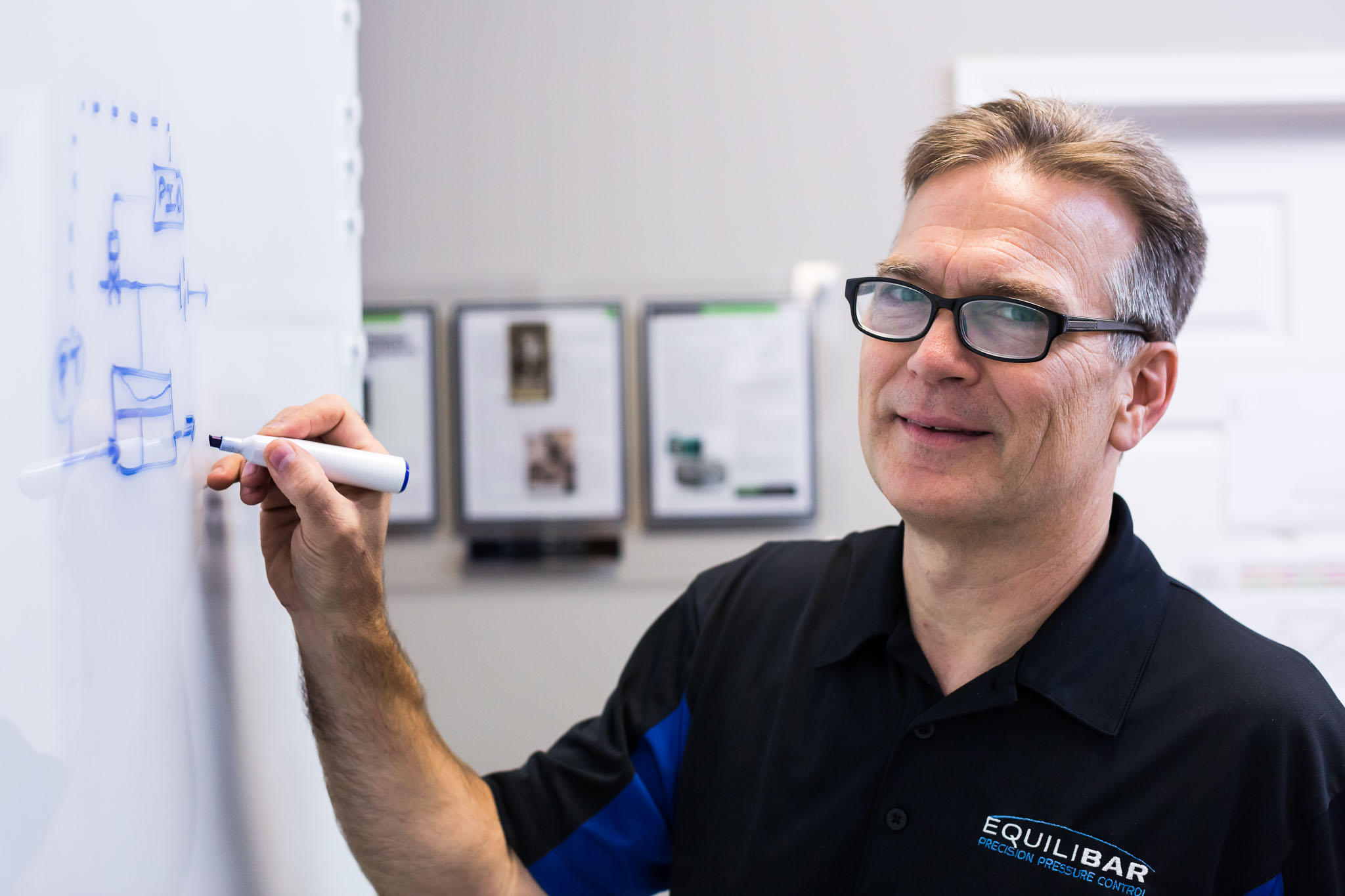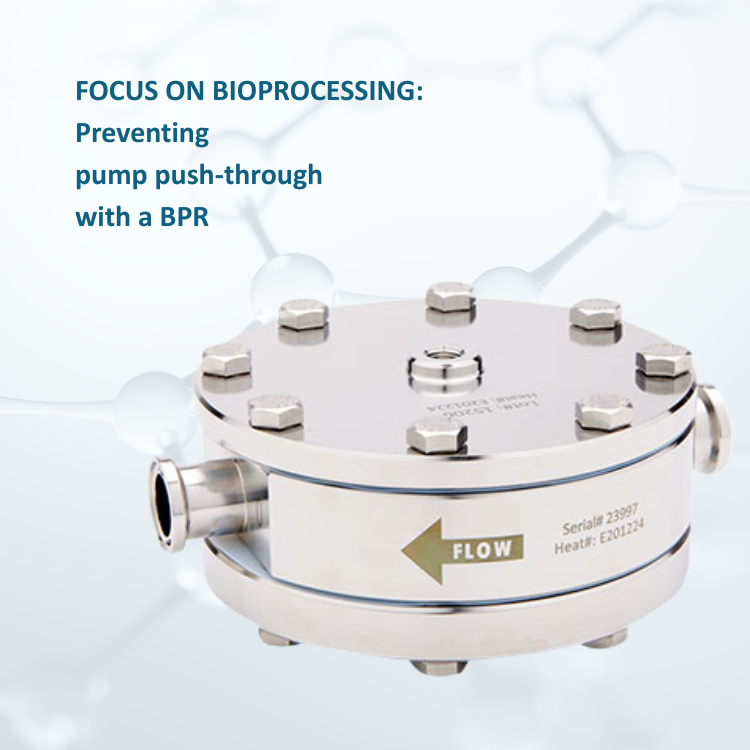Equilibar’s back pressure regulators (BPRs) are dome loaded. This means that the pressure setpoint is provided by a fluid that is fed into a chamber on the top (dome) of the regulator. The pressure of the fluid (either gas or liquid) is set by a second regulator called a pilot regulator. The loading mechanism is a supple diaphragm, which is the only moving part in an Equilibar BPR.
The dome-loaded design is fundamentally different than traditional spring-loaded technology and offers several advantages, including superior precision and the ability to use computer automation.
There are a variety of ways to approach dome loading. Our new web page—Ways to Dome Load a Back Pressure Regulator —contains detailed information about each one.
Below is a quick overview of the seven most popular choices:
- Manual pilot regulator: Simply applying a static pressure to the dome of the BPR usually provides good performance. A manual air or nitrogen regulator with self-venting feature is typically used as the pilot regulator.
- Electronic pilot regulator in open loop control: For computer automation, an electronic pressure regulator can act as the pilot regulator. The computer can send a signal to the electronic pressure regulator, changing the process setpoint as required. The Equilibar BPR will react instantaneously.
- Electronic pilot regulator in closed loop or remote sensing control: For additional precision, a closed loop control setup can be used with the electronic pressure regulator to compensate for pressure losses inside our BPR or within parts of the controlled process.
- Manual pilot controller with remote sense: By connecting tubing from the pilot regulator to the point of the process where precise control is required, it is possible to achieve higher precision and higher capacities than with standard open-loop control. Equilibar offers the RSV, remote sense vacuum pilot, to achieve this precision.
- Process pilot using a mechanical setpoint without separate gas supply: In some cases, no air or nitrogen is available at the desired pressure range for a 1:1 dome-loaded BPR. For clean liquids and gases, the process media itself can energize a mechanical set-point regulator for convenient control.
- Syringe pump: Another method seen in the core analysis industry is to use a liquid pressure pump to supply the pressure on the dome. Syringe-type pumps with integrated pressure can be deployed to control a liquid pressure equal to the desired setpoint.
- Static dome loading: Our replacement valves for Mity Mite valves use static dome loading from the process inlet to generate the set-point pressure.
If you have questions about dome-loading or any other aspect of Equilibar technology, we invite you to contact one of our engineers or visit the Ways to Dome Load a Back Pressure Regulator page.



